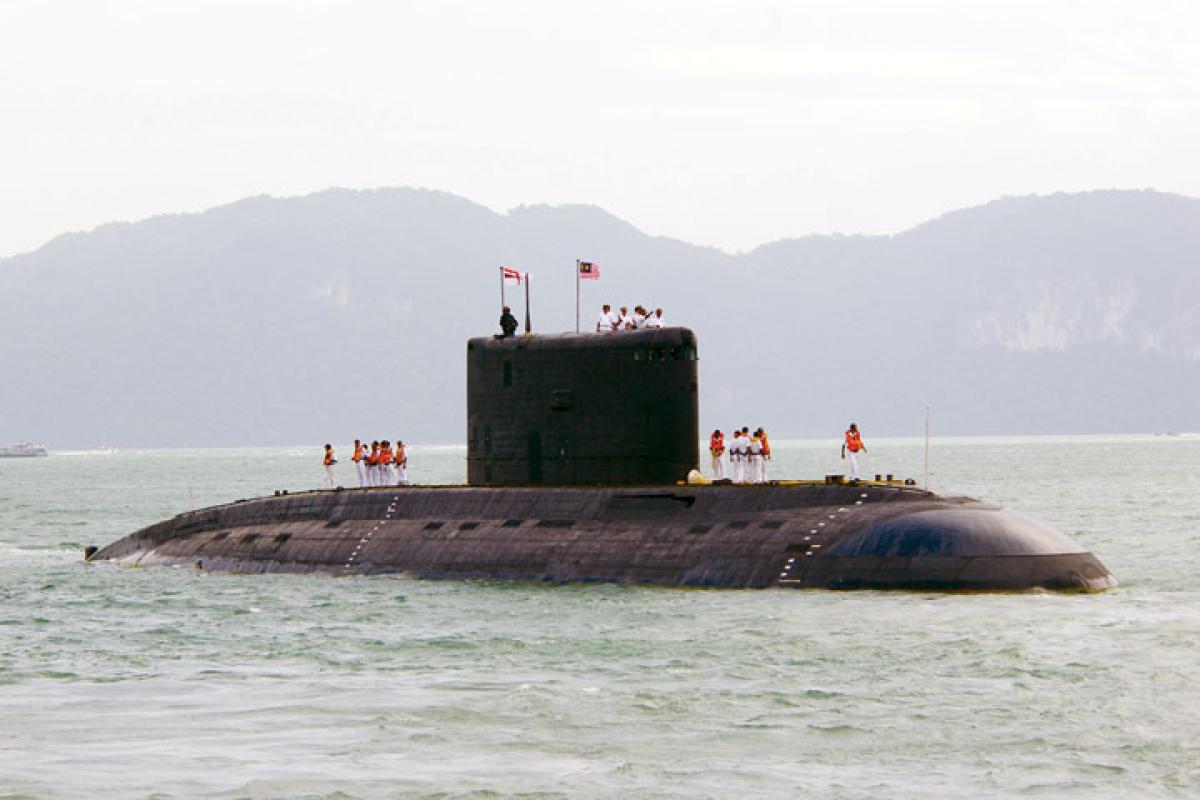The submarine INS Sindhurakshak, pictured here, is the latest Indian Kilo-class submarine to complete a major overhaul and refit in Russia. Modernized at Zvezdochka shipyard under a 2010 contract, the Sindhurakshak is one of ten Kilo-class boats operated by the Indian Navy. All ten are being modernized with new electronics, the capability to launch Klub 3M-54E antiship missiles, and other improvements. The majority of the Indian Kilo class, which entered service between 1986 and 2000, already completed similar modernizations. India has placed a high priority on enhancing its submarine forces and plans to acquire new diesel-powered Scorpène-class boats and nuclear powered submarines under the Arihant-class Advanced Technology Vessel program. INS Chakra, an Akula-class submarine, is operated under lease from Russia through at least 2021.
In line with Russian military efforts to increase global presence and play a greater role around the world, the country has announced plans to establish a standing naval force in the Mediterranean Sea. The new force, to be placed under the operational control of the Black Sea Fleet, will likely consist of a mix of five to six support ships and combatants such as the Slava-class cruiser Moskva, pictured here. The Russian navy has worked to maintain presence in the Mediterranean Sea since the end of the Cold War. Its most recent Mediterranean training exercises concluded in late January and involved more than 20 ships deployed from the Baltic, Northern, and Black Sea fleets over a ten-day period. Soon after the Mediterranean exercises concluded, the Russian armed forces announced that, thousands of miles to the north, regular aviation patrols have begun over the Arctic Ocean by Il-38 May and Tu-142 Bear maritime-patrol aircraft. Russian strategic bombers also have been conducting frequent patrol missions over the Arctic, Atlantic, and Pacific oceans since 2007.
HMS Edinburgh, the last Type 42 destroyer in Royal Navy service, returned from her final deployment on 28 March and began preparations for a planned June decommissioning ceremony. Designed during the late 1960s as an air-defense ship fitted with the Sea Dart surface-to-air missile system, the early Type 42 units were found to be deficient in damage control and limited in sensor capability and self-defense, although the Sea Dart system was considered a success. Those findings resulted in a lengthened version of the class, known as the Type 42C, to provide better seaworthiness, endurance, and habitability. The Edinburgh was the third of four Type 42C destroyers to join the fleet in the mid 1980s. Fourteen Type 42 destroyers were built for the United Kingdom in three distinct batches; ironically, two more ships of the class were built for Argentina. The Type 42s played an important role on both sides of the 1982 Falklands War; they are being replaced in British service by Type 45 (Daring-class) destroyers.



